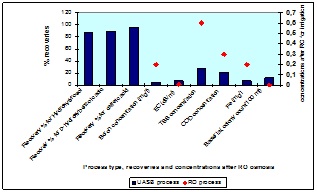
Nefise Erdincmer
Dokuz Eylul University, Turkey
Title: Recovery of some merit organics from olive mill effluents and reuse of treated water
Biography
Biography: Nefise Erdincmer
Abstract
Statement of the Problem: The olive mill sector needs to put into practice new strategies for wastewater management that will reduce the environmental impact of its excessive water consumption and high dye and auxiliary chemical expenditures The sector will be forced to develop an integrated waste management approach that involves the recycling of not only water but also consumable chemicals. Hydroxytyrosol is the main polyphenol naturally occurring in olive oil mill wastewater (OMW) either from two-phase or three-phase traditional and industrial mills. It is naturally occurring in virgin olive oil also in form of monoacetyl derivative which shows an antioxidant effect very close to the parent compound. Among the wide group of polyphenols, p-hydroxybenzoic acid and caffeic acid can be applied as natural antioxidant for cosmetic, food and pharmaceutical industries. In this study, the recoveries of the hydroxytyrosol, hydroxybenzoic acid and caffeic acid were performed using sequential anaerobic upflow anaerobic sludge blanket reactor (UASB) and reverse ozmosis (RO) processes. After UASB treatment the effluent was asidified, filtered and vaporised at 30 â°C at a pressure of 1.7 A in a autoclave. The obtained oil was extracted with ethyl acetate. The Hydroxytyrosol, p-hydroxybenzoic acid and caffeic acid were purified with kieselgel containing silica-gel and they were measured in a HPLC in a isocratic media using acetonitril/acettic acid/water mixture flow rate of 1.2 ml/min. The final sequential RO membrane stages were carried out in a bench-scale cross-flow unit. Flat-sheet thin-film composite (TFC) RO consisted of a polyamide active layer on a polysulfone ultra-filtration support, with an active area of 200 cm2 was used for reuse the treated water for process and land application since this treatment step maintaining the parametric values with regard to pH, EC, TSS, COD, total iron, ionic content and bacterial growth below the standard limits established for irrigation purposes.


